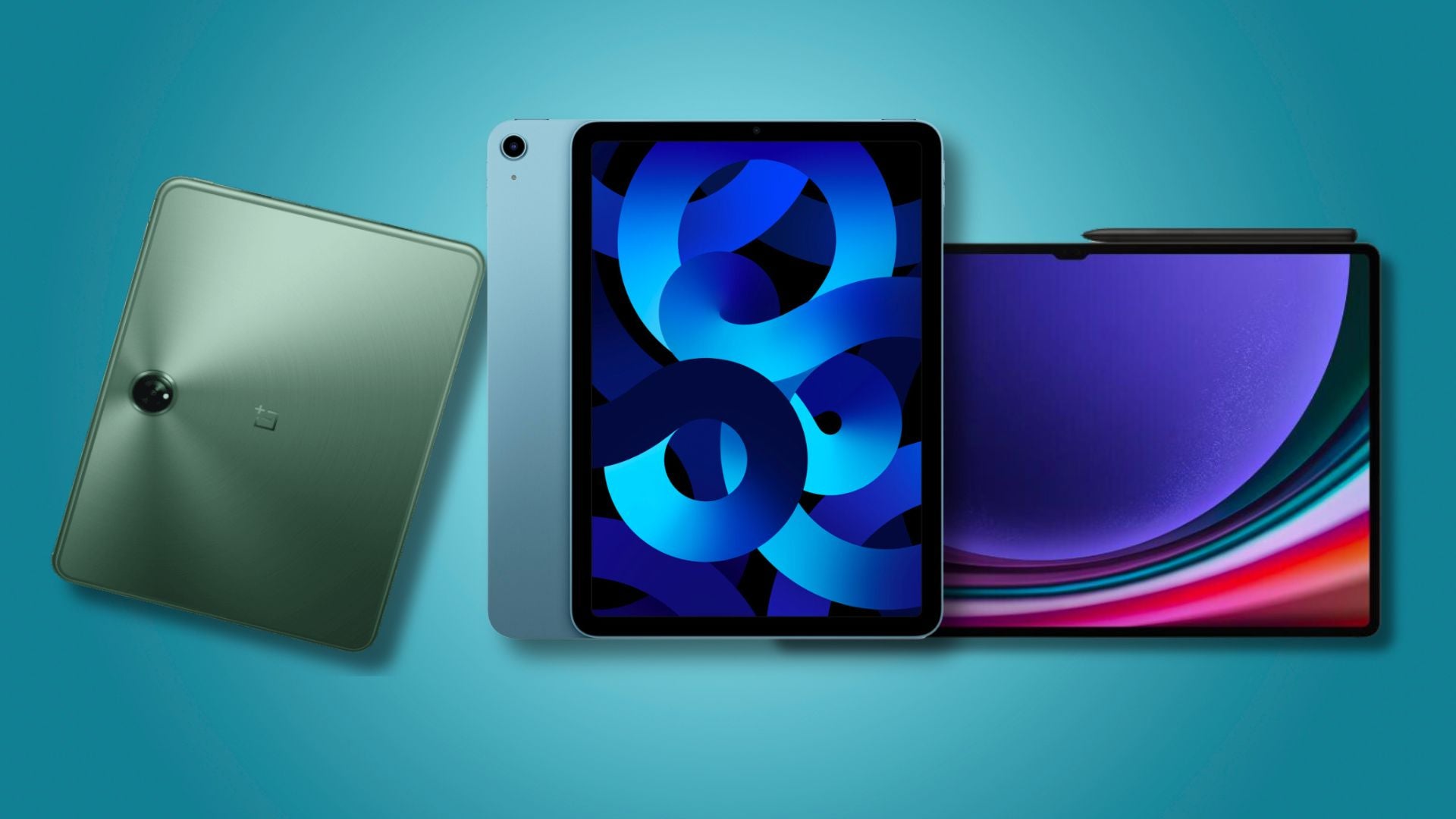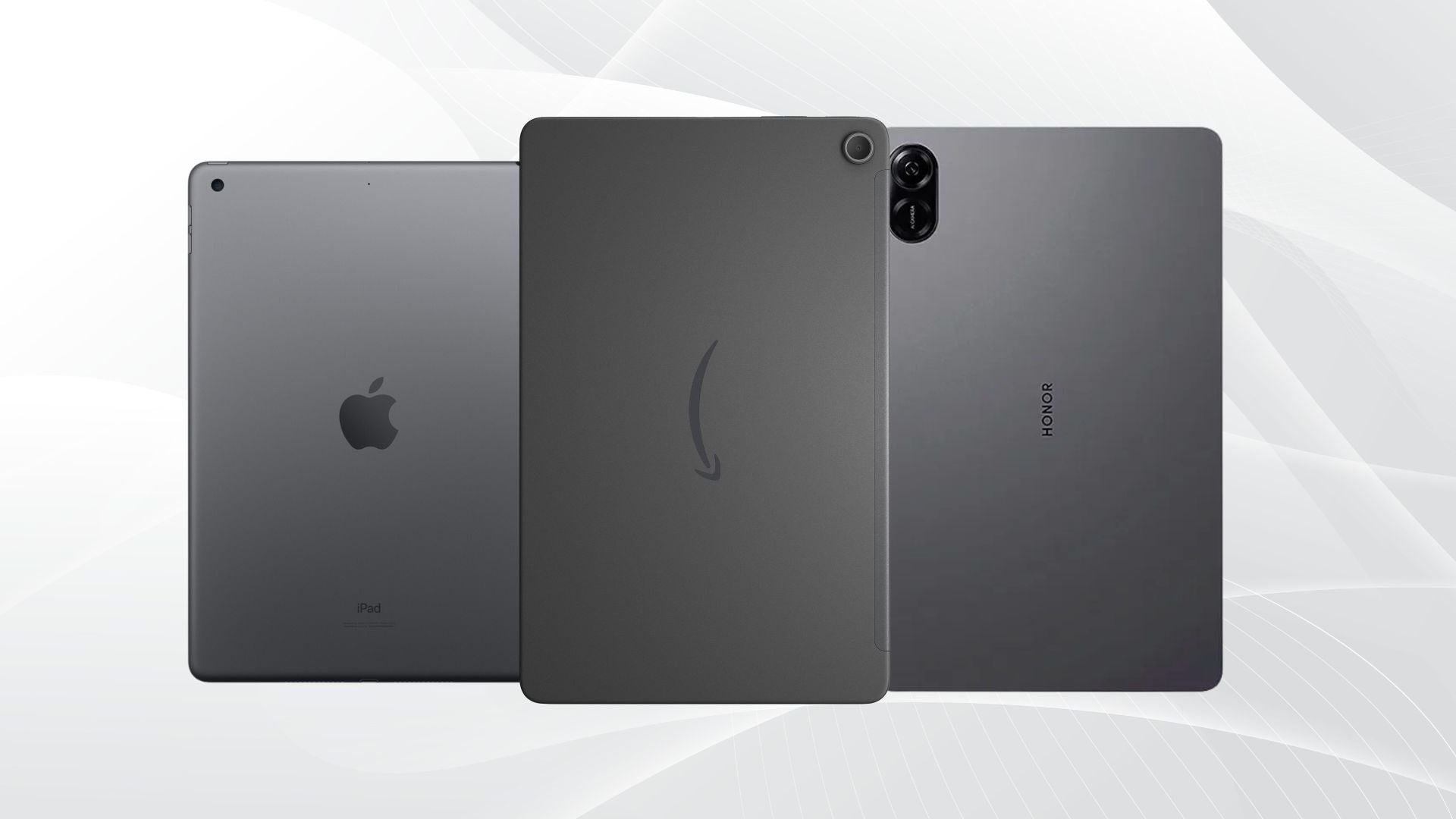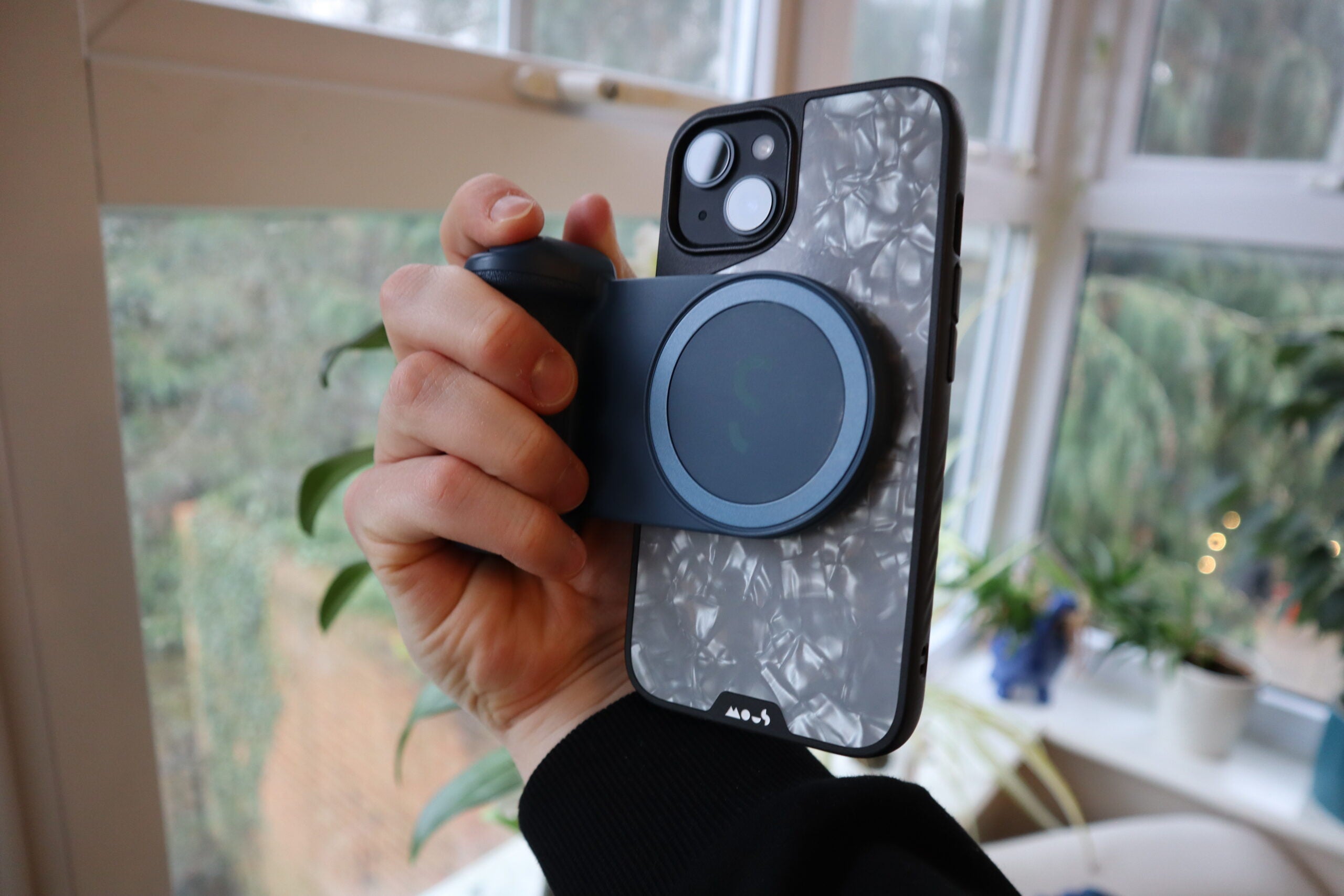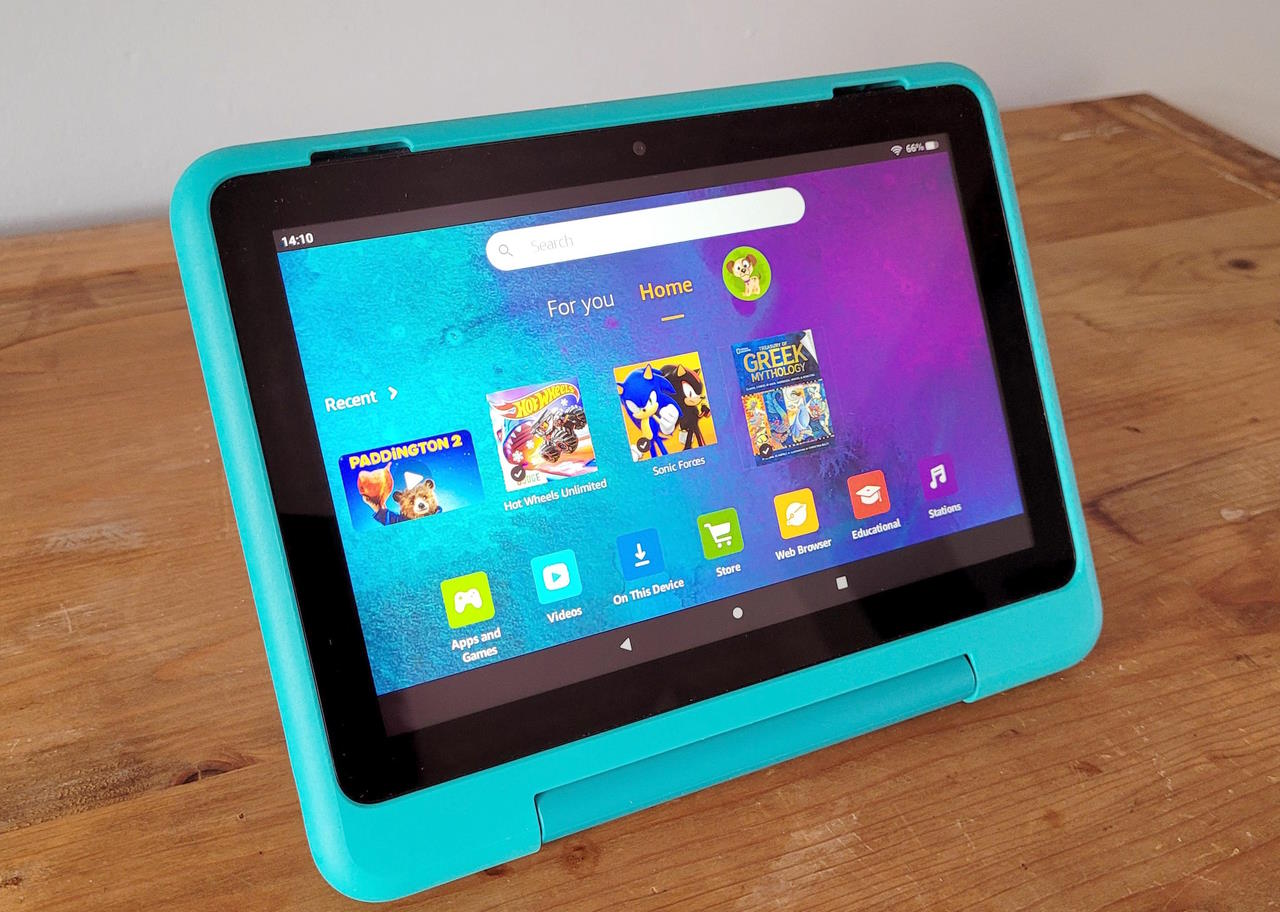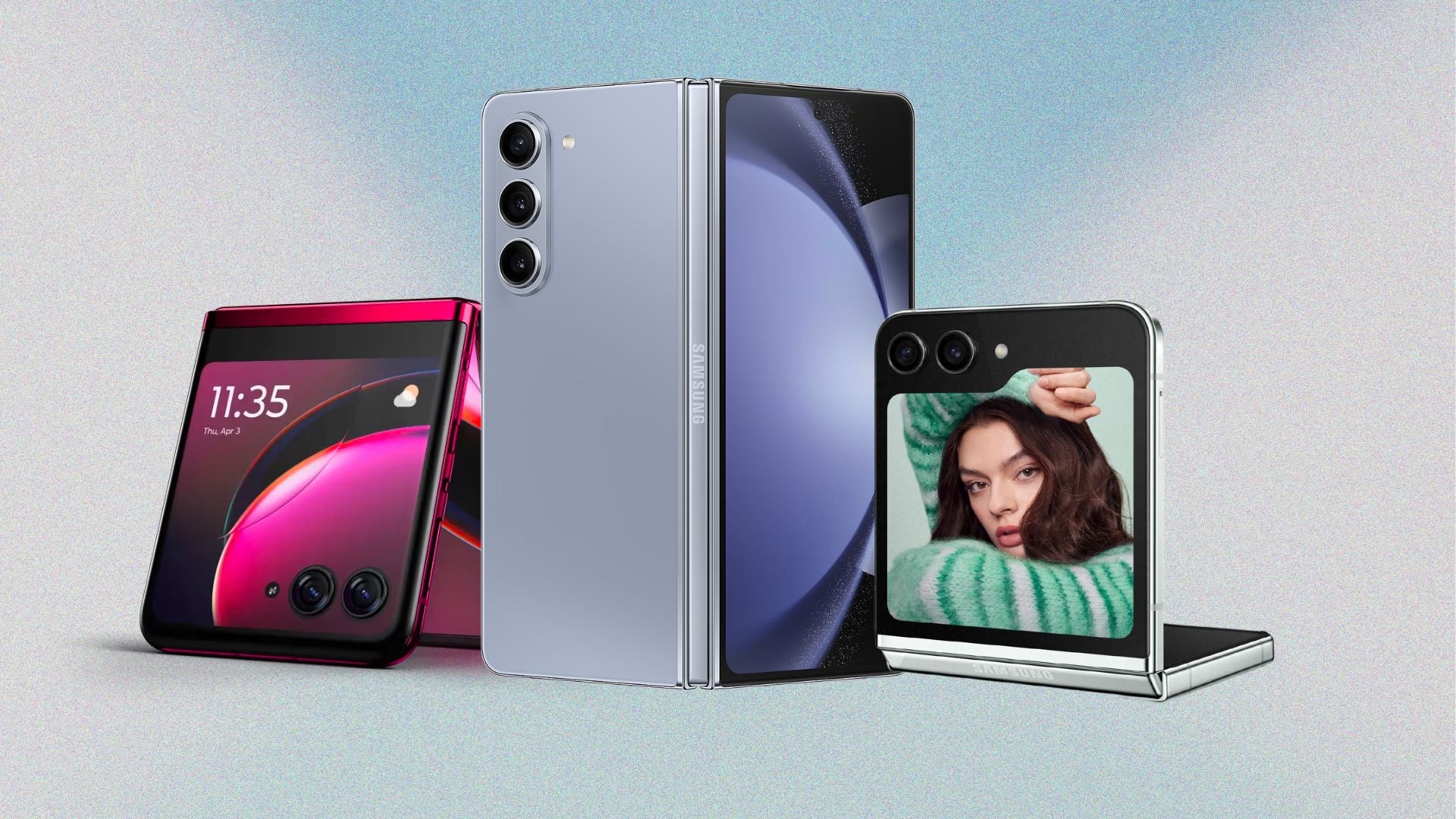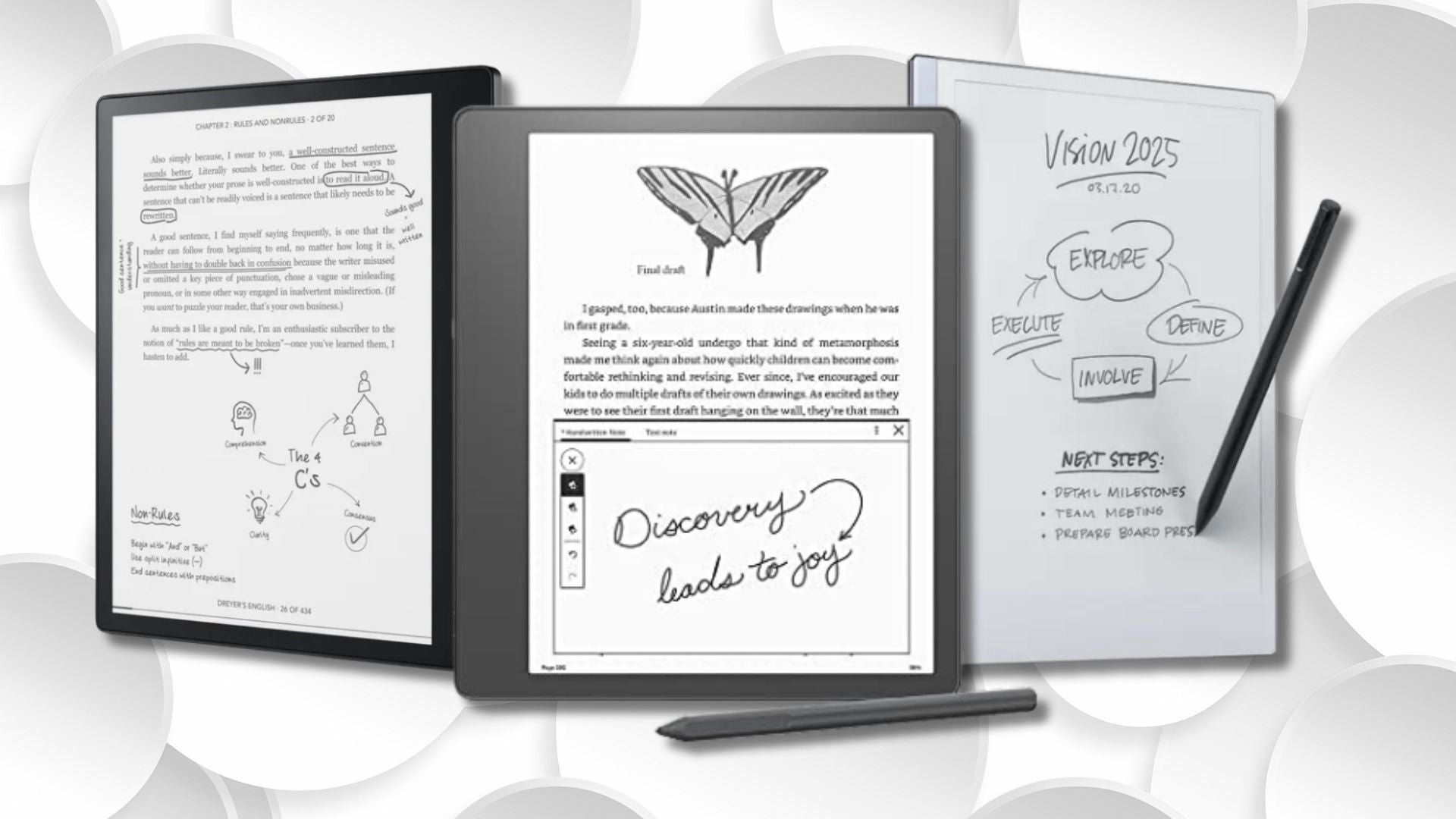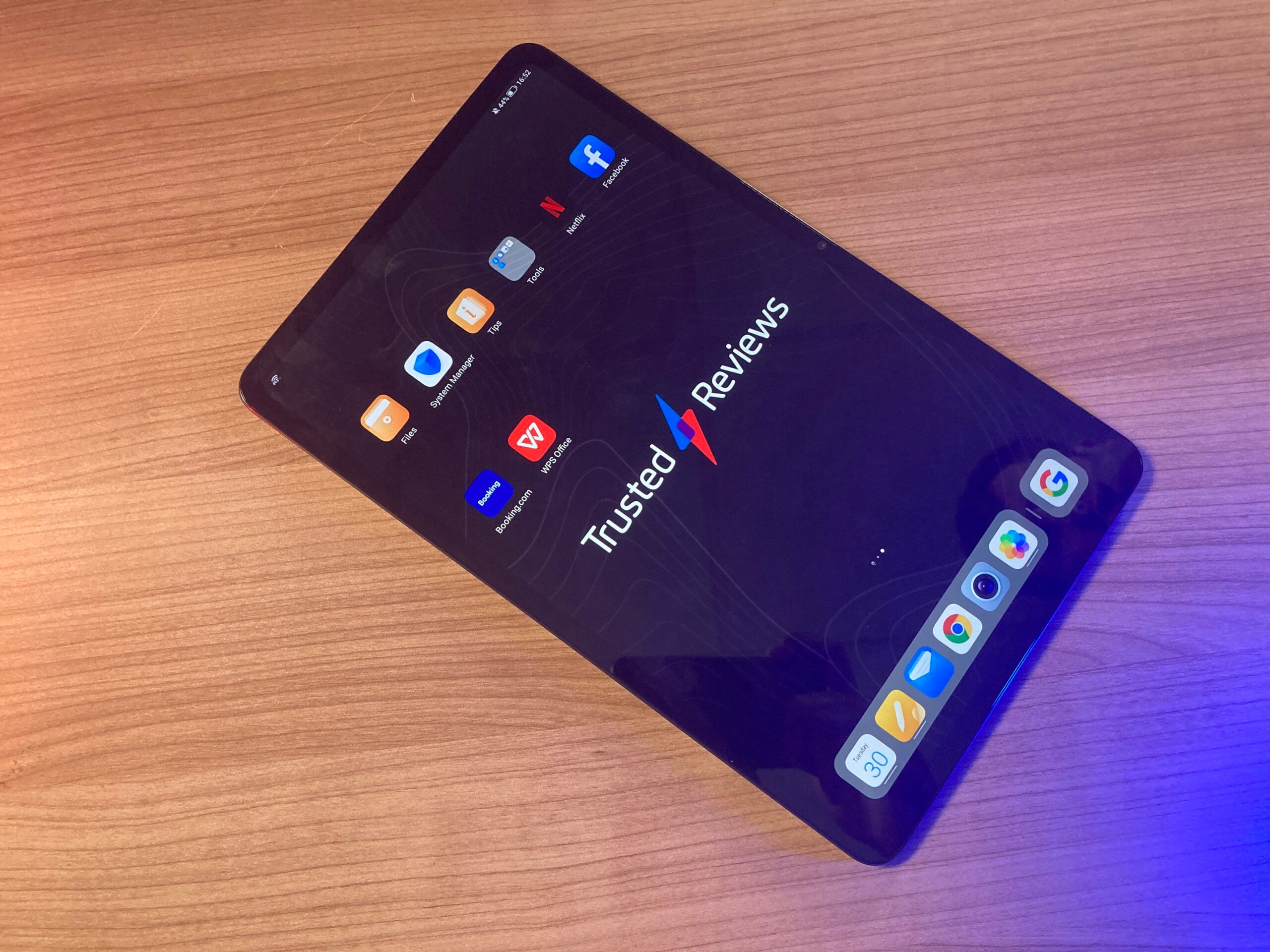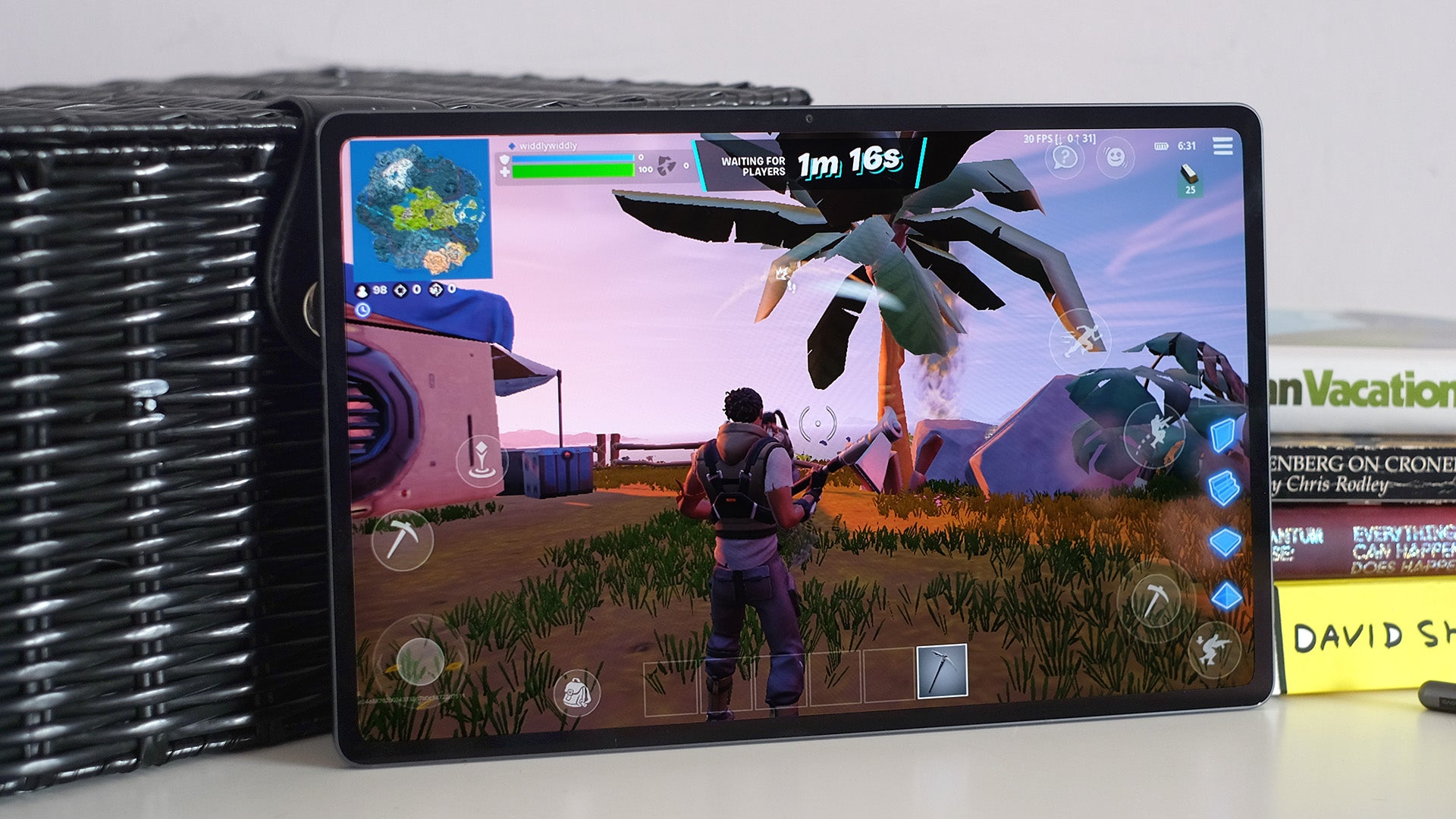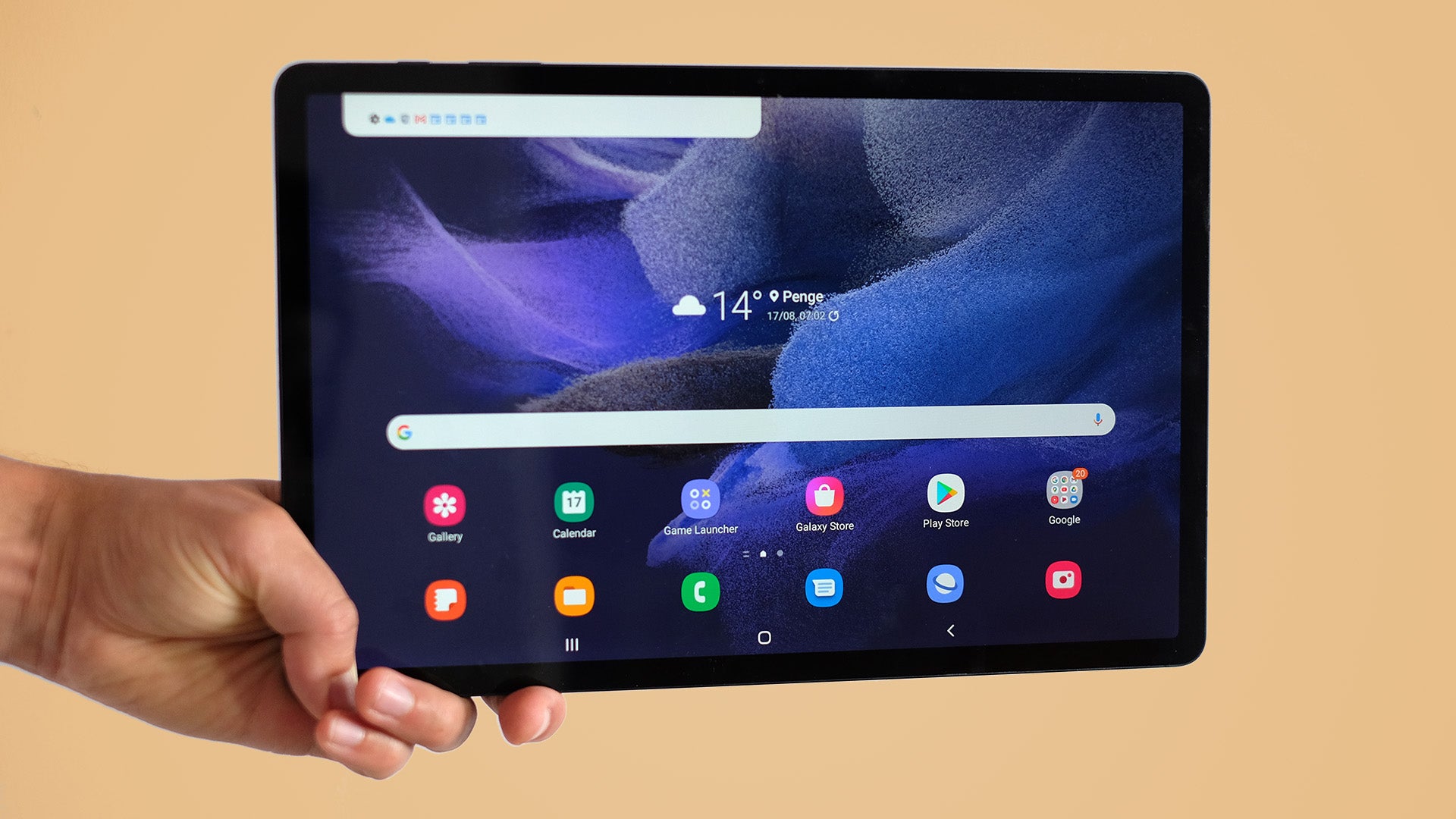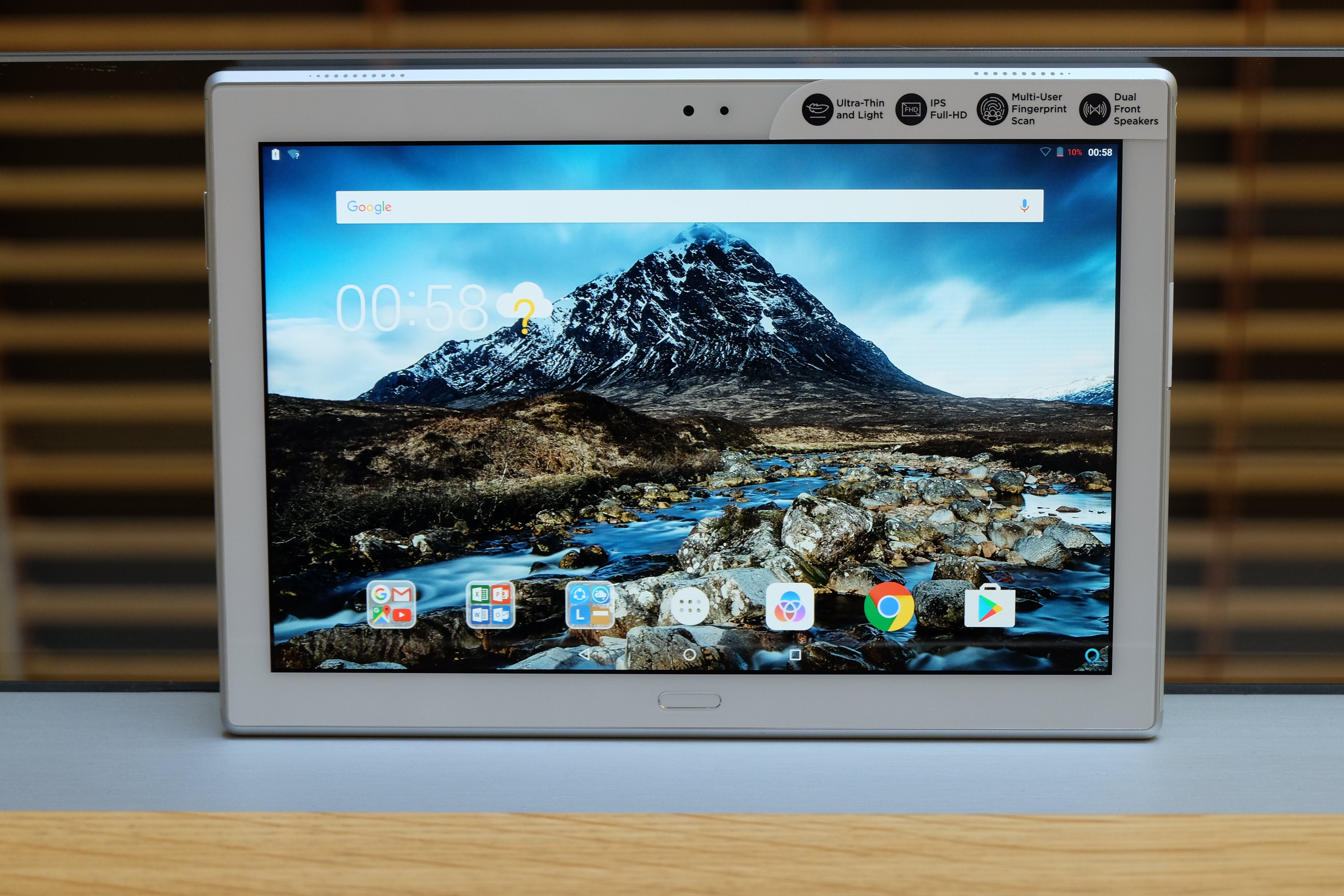Best Android Tablet 2024: Do more with these larger Android devices
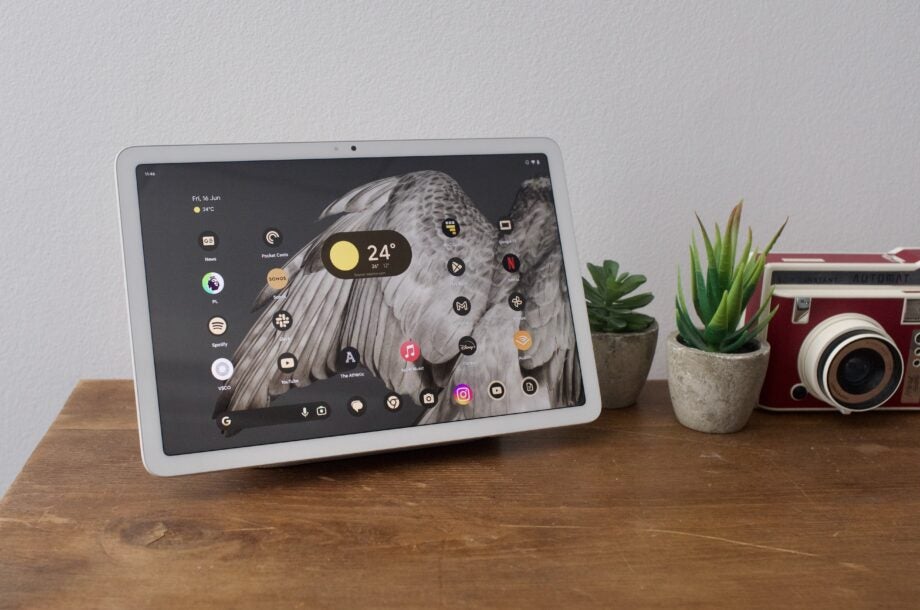
If you’re in the market for a tablet but want to explore options beyond iPad or Windows-powered Surface devices, your attention will likely turn to tablets running Android. However, with a wide array of choices available, determining the best tablet to suit your needs can be quite challenging.
Renowned manufacturers such as Samsung, Amazon, Xiaomi, Nokia, Google, and Asus have released tablets in all shapes and sizes over the years.
And while the choice is great, it’s also a two-edged sword, with the sheer variety making it very difficult to pick the right tablet for your specific needs. Do you need a powerful tablet like the Galaxy Tab S9 Ultra or will an entry-level Amazon Fire HD 8 do? What about display size? And do you need features like fast charging?
That’s all quite confusing, but the expert Trusted Reviews team is here to help you pick the right tablet. We’ve created this guide detailing the best-performing Android tablets that we’ve personally tested and are available to buy in 2024.
Throughout our comprehensive review process, we thoroughly assess crucial aspects such as screen quality, performance, battery life, and durability, especially in terms of child usage. Rest assured, our buying advice is based on trustworthy evaluations.
We’ve also made sure to include options for all the common uses of a tablet. In this list, you’ll find everything from giant screen tablets for power users and creatives, to affordable options for students and young kids, and even niche options like the Nubia Pad 3D.
If you don’t find what you’re looking for, make sure to also check out our wider best tablets guide and more focused best tablets for kids and best Fire tablets advice pages.
Best Android tablets at a glance
- Best for most people: Xiaomi Pad 5 – check price
- Best for streaming: Samsung Galaxy Tab S9 Ultra – check price
- Best value: Samsung Galaxy Tab S9 FE – check price
- Best for productivity: OnePlus Pad – check price
- Best for kids: Amazon Fire HD 10 Kids – check price
- Best cheap tablet: Honor Pad X9 – check price
- Best for smart home control: Google Pixel Tablet – check price
- Best 3D tablet: Nubia Pad 3D – check price
- Best rugged tablet: Samsung Galaxy Tab Active 5 – check price
How we test
Every Android tablet on this list has been fully reviewed by one of the product experts at Trusted Reviews. This involves it being benchmarked in our labs and then being used by our reviewer for at least five days as their main tablet.
Lab tests include synthetic benchmarks to gauge general performance, gaming performance, screen colour accuracy, contrast ratio, max brightness and battery life. The latter covers the average hourly discharge rate when playing games and video, as well as how long the tablet will last running basic office tasks such as web browsing and word processing.
We then check our lab findings to see how the device performs with everyday use. This will see the reviewer use the tablet as their primary device, enacting common tasks such as movie streaming, gaming, web browsing and video calling. If the device is targeted at a specific market such as digital artists, for example, then the tester will also cover areas such as digital stylus support and whether or not the device can effectively run any relevant applications.
When a product is sent to us with optional extras, such as a stylus and keyboard cover, we’ll review how well it performs both with and without these accessories.
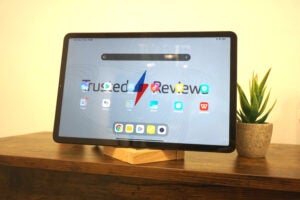 Best for most people
Best for most people
- Excellent screen that’s ideal for Neflix and gaming
- Decent every day performance
- Good build quality
- Powerful speaker setup
- Software features some bloatware
- Demanding tasks heavily impact battery
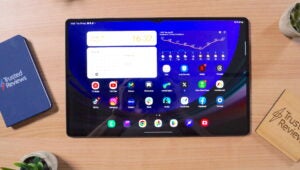 Best for streaming
Best for streaming
- Big display is ideal for movies and multitasking
- IP68 water resistance
- Access to previously iOS-exclusive apps
- S Pen is great for note-taking
- Not as portable as a regular tablet
- More expensive
- Very similar to its predecessor
 Best value
Best value
- Good-looking design
- Includes a great S-Pen stylus
- Borderline overkill water resistance
- Relatively weak processor
- The non-FE tablets have deeper blacks
- No headphone socket
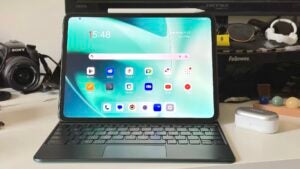 Best for productivity
Best for productivity
- Premium, svelte design
- Large 144Hz display
- 67W fast charging is rapid for a tablet
- No fingerprint reader
- Disappointing accessory software support
- Android tablets lack key pro tablet apps
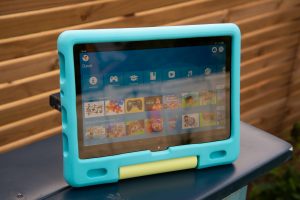 Best for kids
Best for kids
- Super-chunky case offers a lot of protection
- Excellent parental controls
- Worry-free guarantee
- Bright screen
- A little expensive
- Limited app library
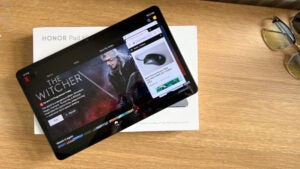 Best cheap tablet
Best cheap tablet
- Fast 120Hz screen
- Great minimalist design
- Solid performance
- Not the sharpest display
- Pushy bloatware
- Speakers distort at higher volumes
 Best for smart home control
Best for smart home control
- Sharp screen
- Dock is a handy charging accessory and a unique feature
- Far more affordable in the US
- Pixel UI works well on a tablet
- Dull design
- The speaker dock doesn’t sound great
- Screen only 60Hz
- Price is far too high in the UK
- Doesn’t have all the Nest Hub software features
 Best for 3D content
Best for 3D content
- Unique glasses-free display
- 3D photography intuitively handled
- Decent battery life
- Very thick and heavy
- Not all 3D content available
- Bugs and limitations make it feel like a prototype
 Best rugged tablet
Best rugged tablet
- Rugged design
- Enough performance for most situations
- Bright, fast screen
- Only a single speaker
- No kickstand
- Duplicate apps preinstalled
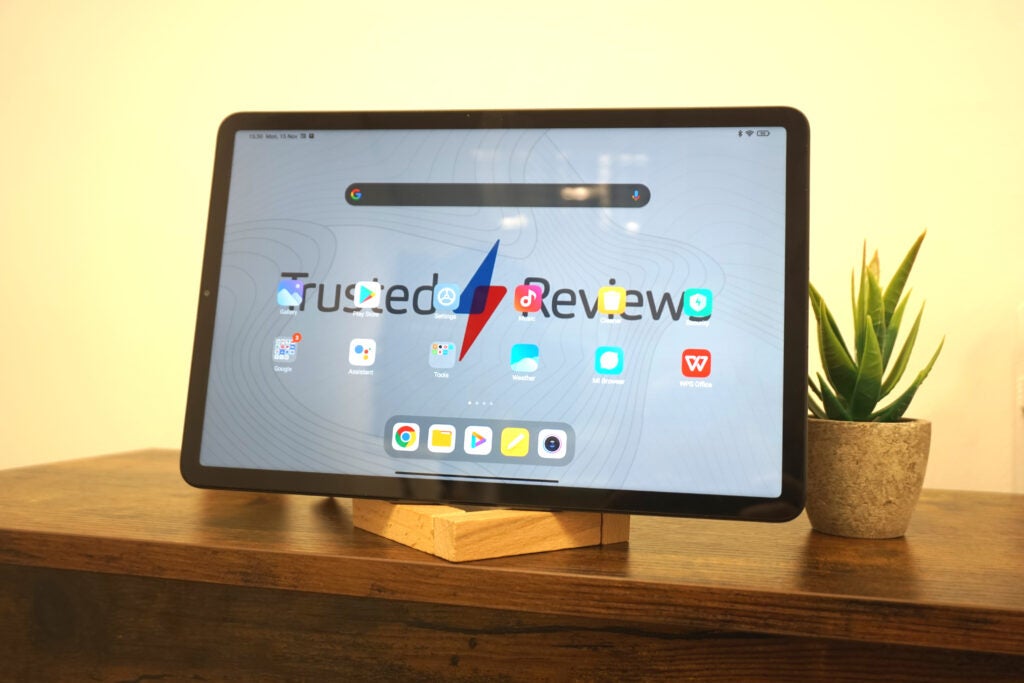
Xiaomi Pad 5
The best Android tablet for most people
Pros
- Excellent screen that’s ideal for Neflix and gaming
- Decent every day performance
- Good build quality
- Powerful speaker setup
Cons
- Software features some bloatware
- Demanding tasks heavily impact battery
The Xiaomi Pad 5 is the Chinese tech giant’s attempt to create an Android-powered version of the iPad Air. And, following a fortnight of use, we found the device completely succeeds in this endeavor, making it the best Android tablet we’d recommend to most people.
Out of the box the device immediately impressed, sporting a slim but sturdy metal chassis that felt suitably scratch-resistant to comfortably slot into most regular-sized bags and backpacks without concern.
While it didn’t prove to be the best tablet in any one area during our lab and real-world tests, it delivered reliable performance in pretty much all of the core areas we tested. The Xiaomi Pad 5’s 11-inch LCD screen doesn’t offer as deep blacks as the Galaxy Tab S8 Ultra, which features an AMOLED panel. But to the naked eye it’s still capable of presenting decent contrast and a high enough level of maximum brightness to make HDR content on Netflix pop.
The quad-speaker setup isn’t as powerful as the system seen on the competing Lenovo P12 Pro, with the low-end – in particular – in the latter sounding more powerful. But given the price difference between the two devices, this is more than forgivable. Overall, the Xiaomi Pad 5’s audio offering was more than powerful, detailed and controlled enough to comfortably watch movies and play games.
For gaming, the 120Hz refresh rate is a welcome upgrade over competing tablets we’ve tested at this price, including the iPad Air 2022. The tech lets the Xiaomi Pad 5 render 120 images per second, which is twice the number seen on standard tablet screens locked to 60Hz.
Scrolling, therefore, felt like a far smoother experience on this tablet compared to the iPad Air and rival Android models such as the Lenovo Yoga Tab 13 (2021) with 60Hz screens. This will also be great news for early adopters of game streaming services such as GeForce Now, who will be able to play full-fat PC games on the Xiaomi Pad 5 over the cloud at 120fps.
Add the reliable battery life and the Xiaomi Pad 5 easily earns its place as our current best overall Android tablet offering for most people. During testing, the tablet’s 8720mAh battery shed an average of 9-11% of its charge per hour while streaming 1080p video on Wi-Fi. That figure for streaming games over GeForce Now was 22-25%. Using the Xiaomi Pad 5 for office work, the tablet easily lasted around 10 hours.
The only tablet we’ve tested with these features to offer better stamina is the Lenovo P12 Pro, which can last up to 15 hours of video streaming based on our tests.
Reviewer: Alastair Stevenson
Full review: Xiaomi Pad 5 Review
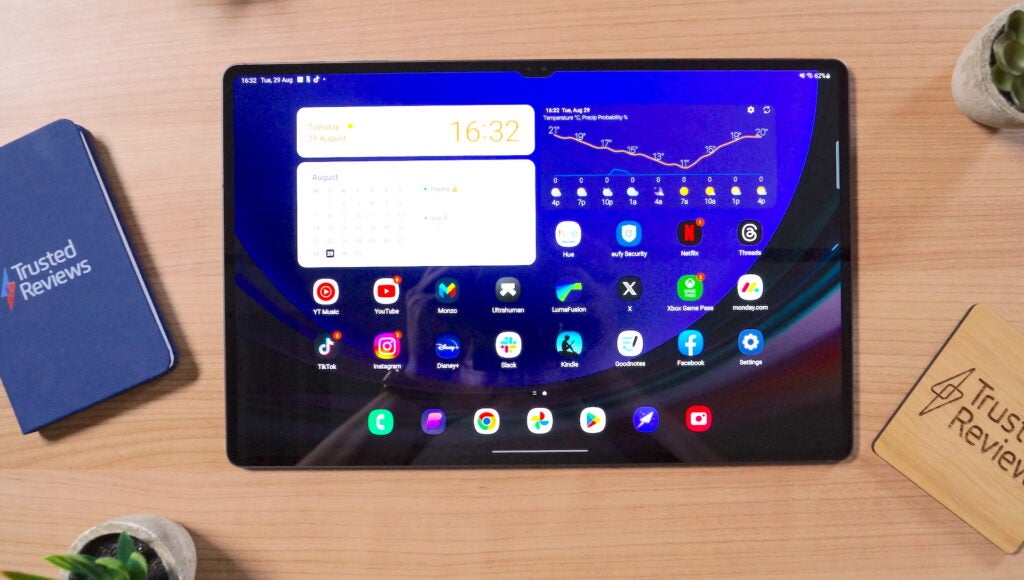
Samsung Galaxy Tab S9 Ultra
The best for streaming
Pros
- Big display is ideal for movies and multitasking
- IP68 water resistance
- Access to previously iOS-exclusive apps
- S Pen is great for note-taking
Cons
- Not as portable as a regular tablet
- More expensive
- Very similar to its predecessor
Big-screen Android tablets have been a rarity up until now, with the space currently being dominated by Apple’s iPad Pro 12.9-inch device. Thankfully, the Samsung Galaxy Tab S8 Ultra filled the hole in the market and Samsung has recently taken things up a notch with the fantastic Samsung Galaxy Tab S9 Ultra.
Our expert reviewer felt the S9 Ultra was a great option for Android fans after a big-screen tablet for watching movies and playing games. The Ultra’s giant 14.6-inch AMOLED is wonderfully calibrated for binge-watching TV shows and movies, with the added screen real-estate making movies feel more immersive.
The AMOLED screen also delivers wonderfully deep blacks, which, coupled with solid levels of max brightness, made HDR content in particular pop. Dark scenes, such as those in BladeRunner, displayed detail that was completely lost in smaller tablets. The S9 Ultra also features a high 120Hz refresh rate, which we found made it a great option for gaming as well.
New for this generation is an IP68-rated body, giving the tablet an extra hit of durability that is still very rare in this space. You won’t find this feature on any other tablet on this list, nor on any iPad. There’s also the very capable Snapdragon 8 Gen 2 for Galaxy chip at the tablet’s heart – providing exceptional performance for games and creative apps.
Battery life is also slightly longer on the iPad, which isn’t surprising considering its smaller screen though, and this certainly isn’t the most portable tablet around.
Reviewer: Lewis Painter
Full review: Galaxy Tab S9 Ultra Review

Samsung Galaxy Tab S9 FE
The best value Android tablet
Pros
- Good-looking design
- Includes a great S-Pen stylus
- Borderline overkill water resistance
Cons
- Relatively weak processor
- The non-FE tablets have deeper blacks
- No headphone socket
Packed full of useful features and even an S-Pen, the Samsung Galaxy Tab S9 FE is an excellent value tablet. Starting at £449, it is a direct rival to the most affordable iPads and is much cheaper than many high-end Android tablets.
The Samsung Galaxy Tab S9 FE is cased with aluminium which gives the tablet a more premium look for a value product. Although slightly thicker, it does look similar to the more pricey Galaxy Tab S9.
The Tab S9 FE is rated IP68, which means it can be submersed in up to 1.5m of freshwater for up to 30 minutes. This is quite rare for a tablet, but a handy feature to have just in case it’s ever subjected to the occasional spill. In addition to this extra layer of protection, the screen is made with Gorilla Glass 5, which can survive 1.2m high drops onto hard, rough surfaces.
The Samsung Galaxy Tab S9 FE also has a side-mounted fingerprint sensor which is a nice touch for a value tablet, to offer up an extra layer of protection to keep your data safe.
Its 10.9-inch screen uses a 90Hz LCD, which is bright enough and has a maximum screen power of 670 nits. As pointed out by our reviewer, this means the Galaxy Tab S9 FE sits somewhere between a laptop and a flagship phone in terms of brightness.
Running on Android 13, the Samsung Galaxy Tab S9 FE also has some interface optimisations that are tablet-specific, including PenUp, a digital art application that lets you draw, colour and trace pictures, and share them via PenUp’s social network, which makes the most of the included S-Pen.
Charging to 100% takes just under two hours but it does support fast charging up to 45W, which is similar to the more expensive Samsung tablets. You can also expect the battery to last for around 11-hours of video streaming or eight hours lighter gaming. In our benchmark tests, 60 minutes of Netflix reduced the battery by 9%.
Reviewer: Andrew Williams
Full Review: Samsung Galaxy Tab S9 FE

OnePlus Pad
The best for productivity
Pros
- Premium, svelte design
- Large 144Hz display
- 67W fast charging is rapid for a tablet
Cons
- No fingerprint reader
- Disappointing accessory software support
- Android tablets lack key pro tablet apps
The newest player in the Android tablet market is OnePlus with its mid-range OnePlus Pad, offering great hardware at a competitive – though not quite cheap – price point.
The overall build of the OnePlus Pad feels solid and robust despite measuring in at just 6.5mm thick and 552g, making it both thinner and lighter than the top-end Galaxy Tab S8 Ultra. That’s despite the fact that it boasts a whopping 11.61-inch display with a super-smooth 144Hz refresh rate. The use of LCD instead of OLED means that blacks aren’t quite as deep as more premium tablets, but it’s still plenty bright and vivid, great for watching movies.
It’s the 7:5 aspect ratio that makes the OnePlus Pad unique, with the boxier aspect ratio ideal for split-screen multitasking. That, combined with a full keyboard and trackpad case and the OnePlus Stylus, make the OnePlus Pad a great option for productivity that rivals what Apple offers with its iPad collection – as long as you fork out for the optional accessories, that is.
The software support for the accessories isn’t perfect right now, but that’ll hopefully change in the near future.
The experience is powered by the high-level (but not quite flagship) MediaTek Dimensity 9000 chipset along with 8GB of RAM and 128GB of storage. It’s not a benchmark-beater but it’s solid in everyday performance, even managing to keep cool over extended gameplay sessions.
Battery life is solid with around 11 hours of use before it’ll need a top-up, and with 67W SuperVOOC charging, it can achieve a full charge in just over an hour. The catch? Unlike most other OnePlus products, a charger doesn’t come in the box. OnePlus instead assumes that it’ll mainly be OnePlus fans who buy the tablet, and thus, will have a SuperVOOC charger handy.
Reviewer: Lewis Painter
Full review: OnePlus Pad
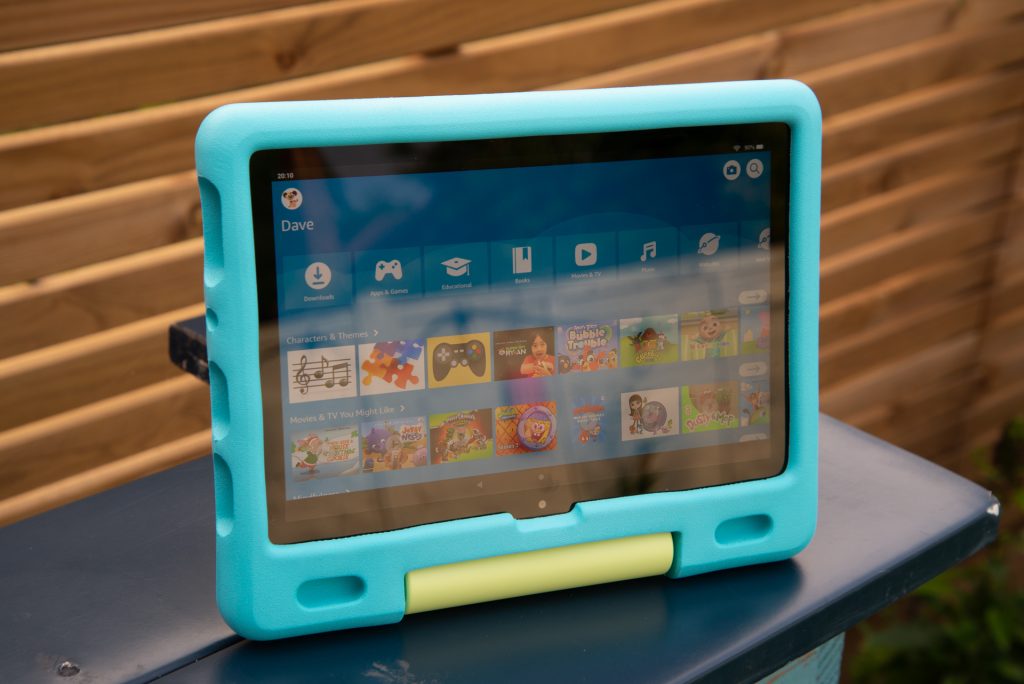
Amazon Fire HD 10 Kids
The best Android tablet for kids
Pros
- Super-chunky case offers a lot of protection
- Excellent parental controls
- Worry-free guarantee
- Bright screen
Cons
- A little expensive
- Limited app library
The Realme Pad may well be cheap and well built, but we still wouldn’t recommend it to any buyer looking for a tablet for a child aged 8 or below. Like most tech, it 100% will not survive a full-blown tantrum where it’s thrown across a room.
If you’re after a device that’s more sturdy then we’d recommend looking at the Amazon Fire HD 10 Kids (2021). Designed specifically for younger kids, it comes with a rugged but cute-looking “Bumper” case that envelopes the chassis in foam, and a plastic outer shell. Having pitted the tablet against a toddler, we can personally attest to its robustness, with our review unit surviving more than a few tantrum throws and a game of tug of war between the child and the family dog.
As an added assurance, Amazon also offers a two-year “no questions asked” replacement policy, where the company will send out a new device free of charge if your progeny does somehow manage to break it.
The 10-inch screen offers similar picture quality to the Realme Pad, with blacks taking on a slightly grey tone. Nevertheless, in our tests images proved plenty sharp and vibrant enough to happily keep kids entertained watching video, reading books or playing games.
The only slight quibble parents should be aware of is that, although its operating system is based on Android, FireOS is generally limited to Amazon services. As such, you won’t have access to Android’s full range of apps and you’ll need an Amazon Prime subscription to make the most of the tablet.
This has been a reason we’ve traditionally awarded middling scores to Amazon’s other Fire tablets. However, given the Fire HD 10 Kids’ focus, our reviewer found these limitations to actually be a positive. Advanced parental controls make it quick and easy to filter the content your kids can access, restrict or block in-app purchases, and set limits on how much screen time they’re allowed each day.
The bundled one-year subscription to Amazon Kids+ also grants access to enough content to keep kids entertained. Reviewing the device we found oodles of videos, games, books and audible books vetted to be safe for use by kids, all available for download and offline use.
Finally, some minor issues to consider. The tablet isn’t terribly fast and it offers only middling battery life. On occasion apps can chug and the device can take a few seconds to recognise commands. This isn’t a significant issue, but it did cause our test subject toddler to occasionally hit the screen in frustration when the pauses occurred. We also found the tablet’s battery could run out after just four hours of video playback. If you want to use the Fire HD 10 Kids to keep your child entertained on a long car journey then you’ll definitely want to invest in a battery pack to keep it running.
Reviewer: David Ludlow
Full review: Amazon Fire HD 10 Kids Review
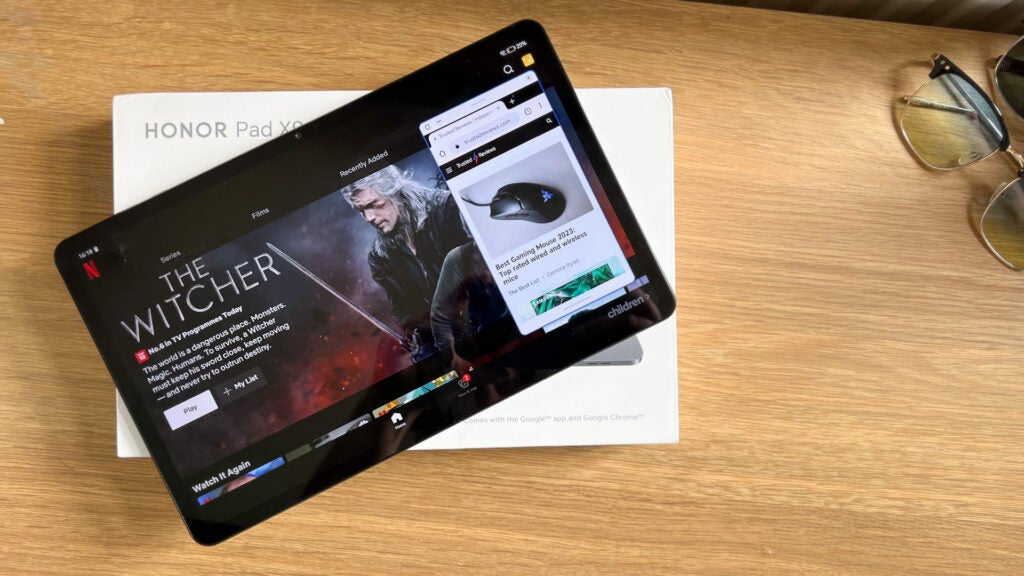
Honor Pad X9
The best cheap Android tablet
Pros
- Fast 120Hz screen
- Great minimalist design
- Solid performance
Cons
- Not the sharpest display
- Pushy bloatware
- Speakers distort at higher volumes
The Honor Pad X9 is a fantastic value tablet that appears more premium than it is and outperforms other tablets in its price bracket.
The design looks high-end with its simple grey finish and subtle silver Honor logo. There’s a 5-megapixel camera on the back, while the front-facing camera sits on the longer edge of the tablet making it ideally positioned for video calls.
The 11.5-inch display has a FHD+ resolution and a 16:10 aspect ratio, keeping the black bars to a minimum when you’re streaming content. There’s no anti-glare coating, meaning it’s up to the tablet’s average brightness to keep the screen viewable in direct sunlight. The display also isn’t the crispest in the 11.5-inch category, but the logos and UI give the tablet a clean look and the display does take advantage of a speedy 120Hz refresh rate.
The Honor Pad X9 is powered by Qualcomm’s Snapdragon 685 and 4GB of RAM. We found that websites loaded smoothly and multi-tasking with two apps side-by-side wasn’t a problem.
Gaming is also surprisingly solid, with the tablet able to handle Diablo Immortal at medium settings with a 30fps cap. Don’t expect a high-level gaming experience, but modern 3D titles should be fine running at lower settings.
The tablet also comfortably beat other low-end alternatives in its price range, including the Blackview Tab 12 Pro and the Telcast T40S, during our benchmark testing. However, the mid-range Amazon Fire Max 11 offers more in terms of raw performance.
Pair the tablet’s performance with the fact the six speakers can easily fill a large room and the Honor Pad X9 is the perfect budget tablet for light content consumption, like streaming Netflix and gaming.
Reviewer: Josh Brown
Full Review: Honor Pad X9
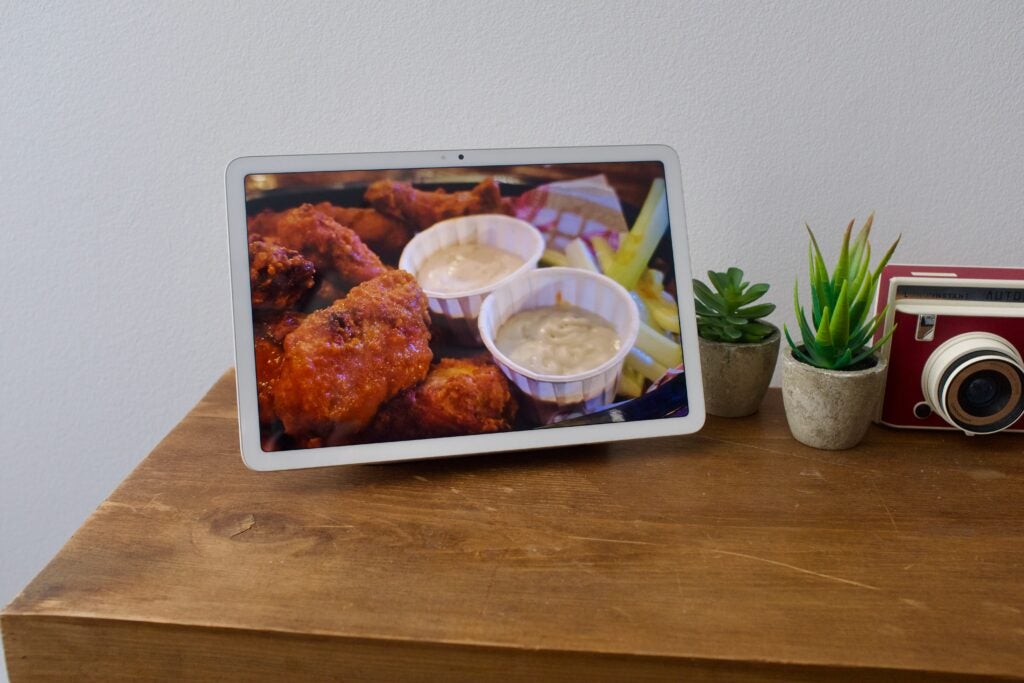
Google Pixel Tablet
Best for smart-home connectivity
Pros
- Sharp screen
- Dock is a handy charging accessory and a unique feature
- Far more affordable in the US
- Pixel UI works well on a tablet
Cons
- Dull design
- The speaker dock doesn’t sound great
- Screen only 60Hz
- Price is far too high in the UK
- Doesn’t have all the Nest Hub software features
Google finally decided to throw its hat into the tablet ring with the Google Pixel Tablet. One of its biggest advantages is the high-quality screen; kitted out with a 10.9-inch LCD screen with a sharp 2560×1600 resolution. It has a locked 60Hz refresh rate – meaning that it cannot fluctuate depending on the task to conserve battery power – making it feel less premium than the 144Hz OnePlus Pad. The high resolution did help to alleviate a lot of these issues, with our review noting that it rendered photos, videos and text very clearly and crisply.
The Pixel Tablet comes with a charging speaker dock bundled in for free, massively setting it apart from the paid accessories of brands like Samsung, OnePlus and Apple. The stand is very sturdy and connects to the tablet via magnets, with audio being redirected to the stand once it’s connected. Once docked, the Pixel Tablet goes into Hub Mode, a slimmed-down version of the UI found on the Nest Hub and Hub Max. This gave us quick access to smart home controls, Google Assistant and various screensavers.
In a similar vein to the rest of Google’s recent products, the Pixel Tablet is powered by the Tensor G2 chipset. This is paired up with 128GB/256GB storage and 8GB RAM, with no option to expand the storage. The chip performed well during use and was more than serviceable for everyday tasks, with games like Stardew Valley and Call of Duty Mobile running without a hitch without the device heating up.
No charger is included with the Pixel Tablet but it can be charged via the dock, with Google claiming that additional docks will be available – so one could be placed in the lounge, and another in the bedroom. An hour of Netflix decreased the battery by 14% and 30 minutes of light gaming took off 7%, on par with the effort from OnePlus.
Overall, while the Google Pixel Tablet is not perfect, it is a solid first attempt from Google and is the ideal device for Android lovers who want to further integrate Google Assistant into their everyday lives.
Reviewer: Max Parker
Full review: Google Pixel Tablet
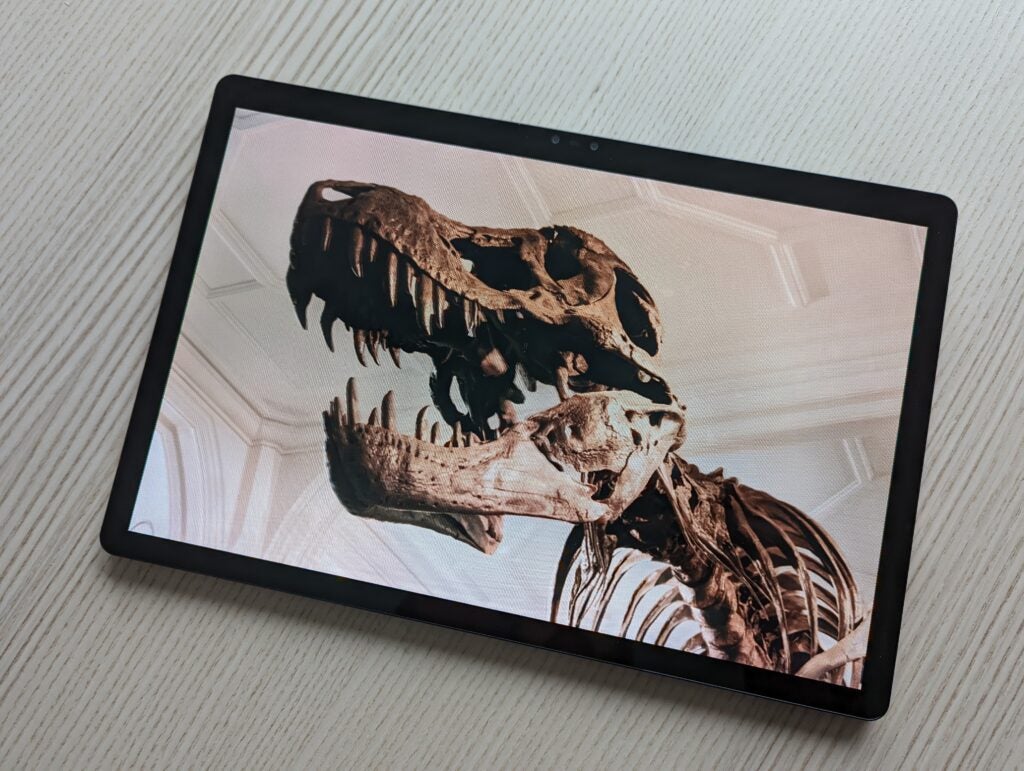
Nubia Pad 3D
Best for 3D content
Pros
- Unique glasses-free display
- 3D photography intuitively handled
- Decent battery life
Cons
- Very thick and heavy
- Not all 3D content available
- Bugs and limitations make it feel like a prototype
The Nubia Pad 3D isn’t for everyone, but if you’re one of the few people that love the idea of 3D content (yes, like that odd era with 3D TVs in the early 2010s) then the glasses-free 3D experience of the Nubia Pad 3D could be tempting.
The large 12.4-inch 3D lightfield display is capable of displaying fairly convincing glasses-free 3D content, and it uses head tracking to work out where your head is at any given moment. The viewing angles are relatively narrow so you’ll have to find that sweet spot, but if you do, the effect can be impressively convincing.
However, it’s not a uniform experience with some 3D content looking a little odd and that’s especially true when upscaling 2D content to 3D. The 3D images taken using the dual cameras take great 3D imagery, but given that anyone else needs a 3D tablet to view them properly, it’s likely something that only you will appreciate it.
While that’s cool, it’s essentially the only real reason to get the Nubia Pad 3D. The 3D element means that it’s much bigger and heavier than practically any other tablet around at 8.4mm thick and 781g. That’s much more than the iPad Pro 12.9’s 6.4mm and 682g, which is generally perceived as being big and bulky.
It’s also rather underpowered sporting the older Snapdragon 888 chipset, especially when you consider that it’ll retail at around $1,099 – firmly in iPad Pro and Galaxy Tab S8 Ultra territory.
So, yes, while it’ll do an admirable job at providing 3D content without the need for glasses, it’s pretty much the only reason to go for the Nubia Pad 3D. Everyone else will be better off with one of the other options mentioned above.
Reviewer: Jon Mundy
Full review: Nubia Pad 3D review
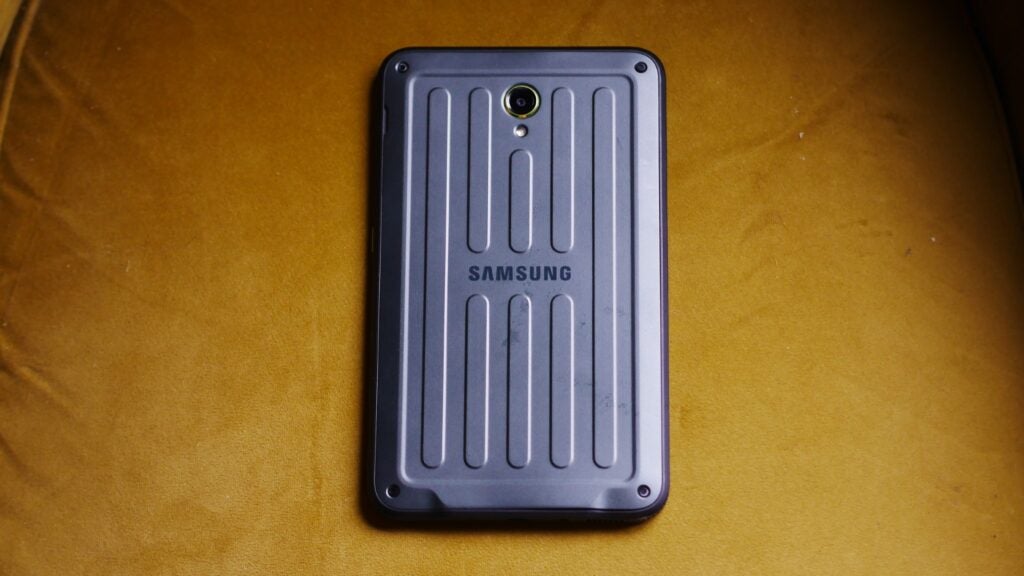
Samsung Galaxy Tab Active 5
Best rugged tablet
Pros
- Rugged design
- Enough performance for most situations
- Bright, fast screen
Cons
- Only a single speaker
- No kickstand
- Duplicate apps preinstalled
While the latest Android tablets are chocked full of features, they’re not really designed to withstand the elements for long periods of time, which can be tricky if you need a larger device to carry with you on a building site or in the great outdoors. Luckily, you’re not completely out of options as the Samsung Galaxy Tab Active 5 is designed with those use cases in mind.
Just to look at the Tab Active 5, you can tell that this is a tablet like no other. With its thick bezels, physical buttons across the bottom and textured backing, this is a tablet that fully expects to take a knock or two along the way. Samsung’s made sure of that much on paper too, with an IP68 certification for water resistance as well as military grade MIL-STD-810H durability.
The caveat for all of this, as you can imagine, is that the Tab Active 5 isn’t quite as powerful on the performance front as some of the other Android tablets on this list, but for using casual apps, signing paperwork and watching the odd bit of content on the go, the Tab Active 5 is more than up to the task.
There’s even an S Pen included so that you can jot down notes easily as you go through the day, and the aforementioned physical buttons just below the screen are incredibly handy if you’re wearing a pair of gloves that just aren’t designed for interacting with a touchscreen.
It’s also worth mentioning that the screen itself is quite easy to read against direct sunlight. The eight-inch touchscreen features a peak brightness of 600 nits which will save you from having to squint at any documents when outdoors.
In other areas, the Tab Active 5 might feel like a tablet from a bygone era for the fact that it not only has a 3.5mm headphone jack but also a fully removable battery. These features are perfect for when you’re away from a charging point for long periods of time and can’t run the risk of running out of battery, either on the tablet itself or any connected devices.
Reviewer: Sean Cameron
Full review: Samsung Galaxy Tab Active 5 review
FAQs
On a tablet OLED isn’t a guarantee a screen will be good. But they uniformly will offer deeper blacks. Based on our experience this lets them offer more immersive video watching thanks to their improved contrast ratios. You can see a full breakdown of how the two screen technologies compare in our OLED vs LCD guide.
5G is a fantastic networking technology that lets you download entire TV series in minutes and is generally a great upgrade for business users who regularly need to download large files onto their tablets on the go. But for general consumers the contracts are very expensive and considering the fact you’ll likely have a phone you can tether the tablet to, we’d recommend most people save their money and opt for a WiFi only option.
Android tablets famously don’t get great software support compared to their iPad rivals. This is one of the reasons iPads tend to score better in our reviews. Software updates are important as they add new services and features to the device and include security upgrades that help keep you safe from cyber criminals.
We also considered…
Comparison specs
Specifications offer an insight into a product’s potential. But they don’t tell the full story which is why we always put any products in our best lists through a thorough review process to see how they are to actually use. As you can see in the tablet below the Galaxy Tab S8 Ultra is the most powerful product in this list featuring a giant OLED screen and cutting-edge Qualcomm CPU.
Trusted Reviews test data
Collecting test data is an important part of review process, but it doesn’t tell the full story of a product’s performance, which is why we back it up with real-world testing. As you can see, despite not being the top-scoring product in any one area, the Xiaomi Pad 5 is the best all-rounder in this list. This, coupled with its competitive price, is why it’s currently our recommended Android tablet for most people.


